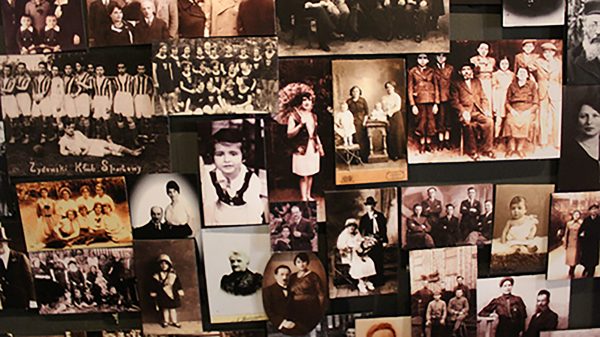Children only above sixth grade should attend the El Paso Holocaust Museum and Study Center because they will understand the Holocaust better than youngsters, the Holocaust education director said.
“The gallery here is geared toward sixth graders and above,” Education Director Jamie Flores said. “So below that, we believe the maturity level of a young child it’s not advanced enough for the depth of the Holocaust,” Flores said.
Although Flores said she believes students should wait until they are older, she does see some younger children visiting the museum with their parents.
“Generally before (a tour) I warn students about what parts are graphic,” Flores said. “We try to really ease them into this kind of history,” she said.
The museum, which opened in 2008 in a building downtown, features video testimony and personal items of survivors, some Nazi weapons and clothing, a boxcar simulation like those used to transport Jews and others to concentration camps in Europe, even a guard tower with machine gun.
The most graphic display is tucked in a corner of the museum with a sign above warning parents that the display is not appropriate for young children. It contains a graphic video of the inside of the camps and emaciated prisoners after they were liberated when World War II ended in 1945.
 When teaching the Holocaust to younger audiences, Flores likes to approach the topic in way that young children can comprehend.
When teaching the Holocaust to younger audiences, Flores likes to approach the topic in way that young children can comprehend.
“When approaching this topic to a very young child we are very careful in what we cover and how we deliver that information,” Flores said. For example, at the summer camp for children, museum docents and others tell them stories of heroic individuals who helped keep Jewish families safe from harm. One story is about two circus owners who saved a Jewish girl by having her work in their circus.
“I think many students start to have an interest even as young as maybe about eight years old,” Flores said. “So there’s a way to talk about certain aspects of the history without going into great detail about the actual atrocities,” she said.
Usually, when adults try to teach children about the Holocaust they explain the events in a complicated way, and the Holocaust museum co-founder disagrees with that technique.
“You have to reach a child on their level,” said Holocaust Museum Co-founder and former Director Sylvia Cohen. “You can’t be talking about what’s going on up here and give them dates. That goes away. You have to reach them on an emotional level and that’s what I try to do with them,” Cohen said.
Because of their violent nature, most of the key events of the Holocaust can be traumatic for young children to see or hear about.
The Nazis “took everyone except me…and then the parents came back from work and didn’t find their children,” said Holocaust survivor David Kaplan, one of a handful of Holocaust survivors in El Paso. “They were on an electric wall and they got electrocuted, and the children, they got killed,” Kaplan said.
There are plenty of Holocaust-related education materials for older children and adults but few geared toward young children.
The comic book “Maus,” written by Art Spiegelman, for example, explains the Holocaust using animals and is geared toward high school students. Another book, “Numbering the Stars,” by Lois Lowry, is geared toward older elementary school children.
The Holocaust museum is helping young children understand the Holocaust through a year-round camp for children ages 8 to 12, now in its eighth year.
Cindy Baca has enrolled her 9-year-old son Orlando in the summer camp.
She likes how the camp introduces the tragic event to children by “having people sharing their experiences with them and also by having them read the stories of people in the books.” Her son already read one book about the Holocaust.
Flores said teaching everyone, not just children, about the significance of the Holocaust is essential for the future of modern day society.
“I think it was a very pivotal part of our history,” Flores said. “As the human race it is also one of the darkest periods of humanity and when human beings sunk to their very lowest,” she said.
Flores and some of the tour guides at the El Paso Holocaust Museum say they have seen a difference in questions coming from different age groups.
“In Middle School they are just full of questions,” Flores said. “They are trying to understand this kind of history this kind of inhumanity. As they get a little bit older the questions actually become much fewer, but the interest grows.”
